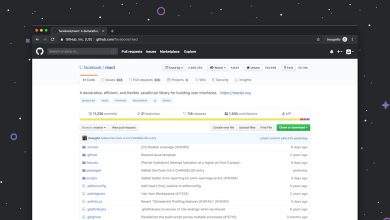
Panorama Plugins: Ideal for Travel Agencies
In an increasingly competitive travel industry, agencies must stand out not only through impeccable service but also by providing engaging and immersive digital experiences. One increasingly popular tool for accomplishing this goal is the use of panorama plugins. These innovative tools provide dynamic, 360-degree views of destinations, enabling agencies to offer potential travelers a virtual peek into the experiences that await them. As such, panorama plugins are quickly becoming an essential asset for modern travel businesses looking to enhance customer engagement and improve conversion rates.
The Power of Immersive Content
The traditional approach of using static images and basic descriptions on travel websites is no longer sufficient to captivate users. Today’s consumers are becoming more visually oriented, expecting a higher level of interactivity when exploring travel options. This is where panorama plugins truly shine.
By incorporating these plugins on their websites, travel agencies can give potential clients a panoramic view of hotel rooms, beaches, cityscapes, landmarks, and much more. These virtual tours can bridge the gap between browsing and booking by providing a near-physical experience from the comfort of a user’s device.
[ai-img]panoramic view, travel, beach resort[/ai-img]Key Benefits of Panorama Plugins for Travel Agencies
Travel agencies can reap significant advantages from integrating panorama plugins into their websites. These benefits are both customer-facing and operational:
- Improved Customer Engagement: Interactive panoramas encourage users to spend more time on a website, exploring multiple locations and gaining a better sense of what they’re booking.
- Higher Conversion Rates: When customers can virtually explore a destination, they’re more likely to feel confident about their booking decision.
- Reduced Miscommunication: Panoramic views offer a realistic representation of accommodations and attractions, reducing booking cancellations due to mismatched expectations.
- Enhanced SEO and Website Metrics: Longer dwell times, lower bounce rates, and increased interactivity can positively impact SEO rankings.
Choosing the Right Plugin
There are multiple panorama plugin options available for travel agencies, ranging from simple viewers to advanced platforms that allow annotations, guided tours, and multimedia layering. When selecting a plugin, agencies should consider the following:
- Compatibility: Ensure the plugin works with your current website CMS (such as WordPress, Joomla, or Drupal).
- Ease of Use: The interface should be user-friendly, with drag-and-drop support or easy embedding options.
- Mobile Responsiveness: A mobile-optimized plugin guarantees a seamless experience across devices, essential for travelers browsing on the go.
- Customizability: Ideally, the plugin should allow for custom logos, links, hotspots, and branding options.
- Support and Documentation: Getting timely assistance and having detailed documentation can save hours during setup and updates.
Examples of popular panorama plugins include Panopress, WP VR, and 3DVista Virtual Tour, each of which provides a range of features suited to businesses of varying sizes and needs.
Practical Applications in the Travel Industry
Travel agencies can use panoramic content in various strategic ways across their digital platforms. Some effective implementations include:
- Destination Previews: Allow customers to explore panoramic views of cities, mountain ranges, beaches, and cultural sites.
- Hotel and Resort Tours: Showcase the interiors and surroundings of accommodations before booking.
- Expedition and Tour Overviews: Give a taste of experiences such as safaris, cruises, or walking tours.
- Special Promotions: Use 360-degree imagery in landing pages for limited-time offers to increase visual impact.
Customer Trust Through Transparency
When potential travelers can “see” a destination before they arrive, it instills confidence and builds trust. Panorama plugins can serve as a transparency tool that minimizes the risk of deception often associated with glamorized marketing images. This function is particularly important for lesser-known destinations or new travel packages that people may not easily find reviews for.
Conclusion
Panorama plugins offer far more than visual appeal—they provide an experiential, trustworthy, and engaging journey that begins long before a customer boards a plane. For travel agencies aiming to differentiate themselves and improve client confidence, these tools are not just a luxury but a necessity in today’s digital-first landscape. In compelling users with immersive content, these plugins power a more informed, emotionally invested, and conversion-ready audience.



